The environment in which we live greatly affects our health. Household, workplace, outdoor and transportation environments all pose risks to health in a number of ways from the poor quality of air that many people breathe, coupled to hazards related to unsafe water, poor sanitation and hygiene. It is estimated that 24% of the global disease burden and 23% of all deaths can be attributed to environmental factors. About 36% of this burden affects children from 0 to 14 years of age.
According to estimates from the WHO Global Health Observatory, about 200 deaths per 100 000 population are attributable to environmental factors in Pakistan. The World Bank estimates that Pakistan’s annual burden of disease due to outdoor air pollution accounts for 22 000 premature adult deaths and 163 432 DALYS lost, while that for indoor pollution accounts for 40 million cases of acute respiratory infections and 28 000 deaths/year. The WHO Global Health Observatory estimates that about 30 deaths per 100 000 are attributable to indoor air pollution, while about 25 deaths per 100 000 are attributable to outdoor air pollution.
Regional plan on the environment
In order to address health issues related to the environment, WHO developed a regional plan in 1997 and has provided support to Member States to develop national strategies for health and the environment, stratifying countries according to differences in geographic, socioeconomic, environmental and health conditions, level of development, available capacity and other factors. Pakistan falls within the group of least developed countries in terms of the water supply and sanitation, and need major efforts to improve the sanitation. this category of countries has identified five priorities for protecting the environment, promoting healthy lifestyles and improving quality of life:
- drinking-water quality (including increased access to water and sanitation)
- solid waste (including hazardous wastes, such as health care waste)
- domestic combustion of biomass (indoor air pollution)
- food safety
- vector control.
To achieve health for all and the Sustainable Development Goals, WHO in partnership with countries is striving to reduce and/or alleviate environmental health threats taking into account the special needs of vulnerable groups (children, elderly, women, chronically ill, the poor) and developing linkages between poverty, health and development for maintaining and sustaining healthy environments.
It is critical to build the institutional capacity of the health sector (at provincial, district and local levels) in relation to environmental hazards to reinforce surveillance, early detection and response in the areas of infectious diseases, nutrition, respiratory diseases, water, and food safety. It is equally important that the provincial authorities are capable of generating and/or gathering intelligence and establishing early warning systems for environmental sensitive diseases, and in integrating such intelligence into existing health information management systems.
Improving evidence-based policies will lead to greater protection for health from environmental changes and raise the awareness of the public about adaptation to change and to adopt appropriate mitigation measures. WHO has provided technical support to strengthen institutional capacities and promote the engagement of women and the local communities by enhancing their capacities to effectively monitor the quality of water sources affected by climate-related extreme events. These activities have ensured well-functioning and properly equipped water quality control facilities are in place in affected areas.
An evidence-based situation report on environment and health in Pakistan was conducted by WHO in 2015. The assessment outcome provided information for decision-makers on the extent and magnitude of likely health risks attributable to climate change, and priority policies and programmes to prevent and reduce the severity of future impacts. The assessment also focussed on identifying populations vulnerable to current and possible future changes in the geographical range of environmental-sensitive infectious diseases. In early 2017, WHO also supported the completion of the GLAAS exercise across all provinces of Pakistan.
Ongoing activities
WHO is providing technical support for the upcoming international SACOSAN VII Conference to be held under the leadership of Ministry of Climate Change in Pakistan in February 2018. It is also conducting discussions for the implementation of piloting GLAAS extension tool for assessing the situation of major information around WASH indicators 6.1; 6.2 and 6.3 with a potential to provide baseline for data on indicator 6.3 specifically, and support in triangulating with data on 6.1 and 6.2 as determined by JMP report.
Planned activities
The major focus of WHO’s upcoming activities include:
- building capacities of national and provincial authorities and partners working in environmental ministries and departments; international nongovernmental organizations; United Nations agencies and community-based organizations in environmental health area to assess and manage the health impacts of environmental risks, including through health impact assessments, and support the development of national policies and plans on environmental and workers’ health;
- providing technical support for finalization of provincial Environmental H strategies and operational plans in alignment with SDG 6;
- extending support to Ministry of Climate Change to conduct consultation meeting to support target setting; monitoring and reporting from the Government on target 6.3;
- conducting capacity-building of provinces for improving monitoring drinking water quality and control to prevent water borne diseases and improving infection control measures in critical units of HFs;
- conducting national and interprovincial seminars on poor air quality to adapt safe international standards for mitigating detrimental hazardous effects on children under five;
- conducting media campaigns on environmental hazards and health issues in Pakistan.
The environment in which we live greatly affects our health. Household, workplace, outdoor and transportation environments all pose risks to health in a number of ways from the poor quality of air that many people breathe, coupled to hazards related to unsafe water, poor sanitation and hygiene. It is estimated that 24% of the global disease burden and 23% of all deaths can be attributed to environmental factors. About 36% of this burden affects children from 0 to 14 years of age.
According to estimates from the WHO Global Health Observatory, about 200 deaths per 100 000 population are attributable to environmental factors in Pakistan. The World Bank estimates that Pakistan’s annual burden of disease due to outdoor air pollution accounts for 22 000 premature adult deaths and 163 432 DALYS lost, while that for indoor pollution accounts for 40 million cases of acute respiratory infections and 28 000 deaths/year. The WHO Global Health Observatory estimates that about 30 deaths per 100 000 are attributable to indoor air pollution, while about 25 deaths per 100 000 are attributable to outdoor air pollution.
Regional plan on the environment
In order to address health issues related to the environment, WHO developed a regional plan in 1997 and has provided support to Member States to develop national strategies for health and the environment, stratifying countries according to differences in geographic, socioeconomic, environmental and health conditions, level of development, available capacity and other factors. Pakistan falls within the group of least developed countries in terms of the water supply and sanitation, and need major efforts to improve the sanitation. this category of countries has identified five priorities for protecting the environment, promoting healthy lifestyles and improving quality of life:
- drinking-water quality (including increased access to water and sanitation)
- solid waste (including hazardous wastes, such as health care waste)
- domestic combustion of biomass (indoor air pollution)
- food safety
- vector control.
To achieve health for all and the Sustainable Development Goals, WHO in partnership with countries is striving to reduce and/or alleviate environmental health threats taking into account the special needs of vulnerable groups (children, elderly, women, chronically ill, the poor) and developing linkages between poverty, health and development for maintaining and sustaining healthy environments.
It is critical to build the institutional capacity of the health sector (at provincial, district and local levels) in relation to environmental hazards to reinforce surveillance, early detection and response in the areas of infectious diseases, nutrition, respiratory diseases, water, and food safety. It is equally important that the provincial authorities are capable of generating and/or gathering intelligence and establishing early warning systems for environmental sensitive diseases, and in integrating such intelligence into existing health information management systems.
Improving evidence-based policies will lead to greater protection for health from environmental changes and raise the awareness of the public about adaptation to change and to adopt appropriate mitigation measures. WHO has provided technical support to strengthen institutional capacities and promote the engagement of women and the local communities by enhancing their capacities to effectively monitor the quality of water sources affected by climate-related extreme events. These activities have ensured well-functioning and properly equipped water quality control facilities are in place in affected areas.
An evidence-based situation report on environment and health in Pakistan was conducted by WHO in 2015. The assessment outcome provided information for decision-makers on the extent and magnitude of likely health risks attributable to climate change, and priority policies and programmes to prevent and reduce the severity of future impacts. The assessment also focussed on identifying populations vulnerable to current and possible future changes in the geographical range of environmental-sensitive infectious diseases. In early 2017, WHO also supported the completion of the GLAAS exercise across all provinces of Pakistan.
Ongoing activities
WHO is providing technical support for the upcoming international SACOSAN VII Conference to be held under the leadership of Ministry of Climate Change in Pakistan in February 2018. It is also conducting discussions for the implementation of piloting GLAAS extension tool for assessing the situation of major information around WASH indicators 6.1; 6.2 and 6.3 with a potential to provide baseline for data on indicator 6.3 specifically, and support in triangulating with data on 6.1 and 6.2 as determined by JMP report.
Planned activities
The major focus of WHO’s upcoming activities include:
- building capacities of national and provincial authorities and partners working in environmental ministries and departments; international nongovernmental organizations; United Nations agencies and community-based organizations in environmental health area to assess and manage the health impacts of environmental risks, including through health impact assessments, and support the development of national policies and plans on environmental and workers’ health;
- providing technical support for finalization of provincial Environmental H strategies and operational plans in alignment with SDG 6;
- extending support to Ministry of Climate Change to conduct consultation meeting to support target setting; monitoring and reporting from the Government on target 6.3;
- conducting capacity-building of provinces for improving monitoring drinking water quality and control to prevent water borne diseases and improving infection control measures in critical units of HFs;
- conducting national and interprovincial seminars on poor air quality to adapt safe international standards for mitigating detrimental hazardous effects on children under five;
- conducting media campaigns on environmental hazards and health issues in Pakistan.








